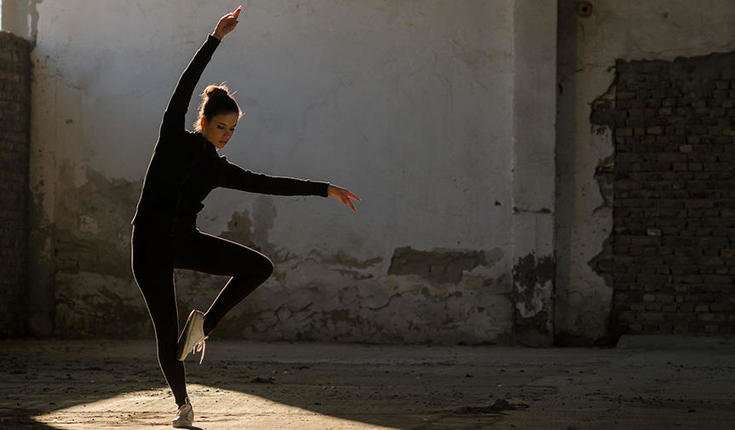Dancer's brains display brain frequencies linked to emotion and memory processes

Neuroscience has studied music for decades, and it has been found to activate both the cortical and deeper brain areas. Neuroscience of dance, instead, is a young but quickly growing field.
In her doctoral dissertation, Master of Science Hanna Poikonen developed methods for understanding the processes that dance generates in the cortex at the Cognitive Brain Research Unit of University of Helsinki. In her research project, she compared the brain functions of professional dancers and musicians to people with no experience of dance or music as they watched recordings of a dance piece.
According to the results, the brain activity of the dancers was different from that of musicians and the control group during sudden changes in the music, long-term listening of music and the audio-visual dance performance.
"The dancers' brains reacted more quickly to changes in the music. The change was apparent in the brain as a reflex before the dancer is even aware of it at a conscious level," Poikonen says.
"I also found that dancers displayed stronger synchronisation at the low theta frequency. Theta synchronisation is linked to emotion and memory processes which are central to all interpersonal interaction and self-understanding."
These results support the earlier findings indicating that the auditory and motor cortex of dancers develops in a unique way.
"Studies of professional dancers and musicians have highlighted the importance of multimodal interaction and motor-related brain regions in cerebral processing of dance and music," Poikonen says.
In her research, she used the novel EEG methods that she had developed: event-related potentials to investigate the influence of fast changes of musical features in the brain in a short timescale and changes in phase synchrony between two electrode channels when investigating cortical dynamics during observation of dance and music over a longer timescale.
These methods could be used in the development and assessment of therapy as well.
"The methods could be applied in estimating the efficiency and developing further expressive therapies, such as dance-movement therapy, as a part of holistic treatment plan for conditions such as Parkinson's disease, dementia, autism, and pain and mood disorders."
More information: Dance on Cortex—ERPs and Phase Synchrony in Dancers and Musicians during a Contemporary Dance Piece: urn.fi/URN:ISBN:978-951-51-4236-8




















